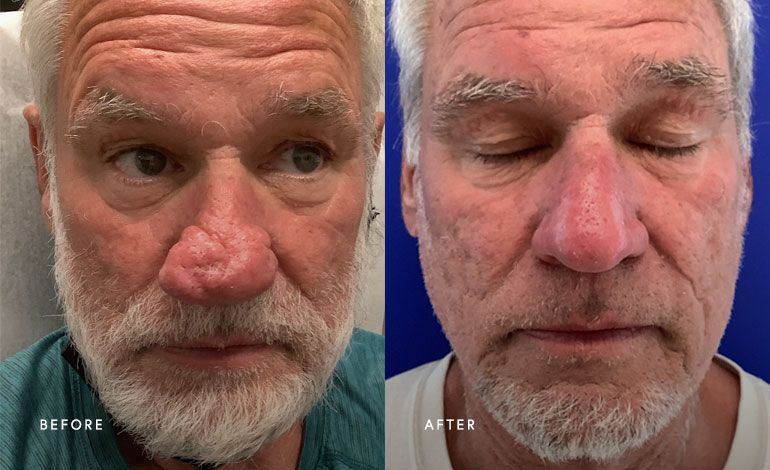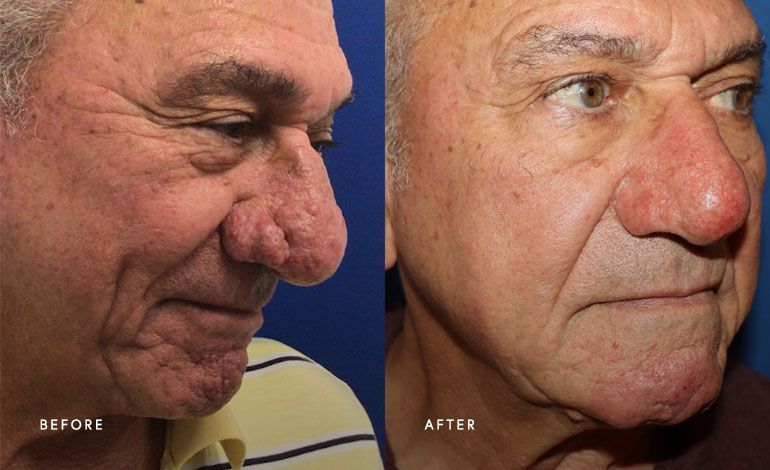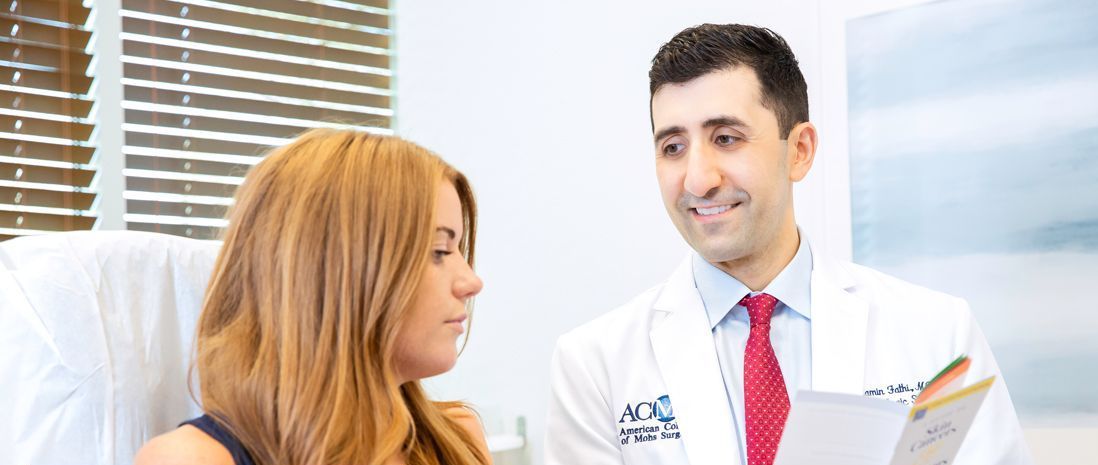Rhinophyma Treatment in Phoenix, AZ
We treat enlarged, thickened nasal skin with precision.
Rhinophyma Treatment: Causes, Symptoms & Expert Surgical Options
Rhinophyma is a progressive skin condition that primarily affects the nose, leading to thickened skin, enlarged oil glands, and a bulbous, deformed appearance. Classified as a subtype of rosacea, this condition can cause significant cosmetic and functional issues, including breathing difficulties due to nasal obstruction. At Phoenix Surgical Dermatology Group, we provide advanced, compassionate care for patients with rhinophyma, offering the latest in medical and surgical treatment options.


What Is Rhinophyma?
Rhinophyma is a form of phymatous rosacea, which involves tissue overgrowth of the nose. The skin becomes thick, pitted, and irregularly shaped, often taking on a bulbous, enlarged appearance. Although the condition is not dangerous, it can cause physical discomfort and emotional distress due to its impact on facial aesthetics and breathing.
Common Characteristics:
- Thickened, bumpy skin on the nose
- Visible and dilated blood vessels (telangiectasias)
- Enlarged oil glands (sebaceous hyperplasia)
- Bulbous nasal shape
- Pitted or scarred texture
- Nasal airway obstruction in severe cases
What Causes Rhinophyma?
The exact cause of rhinophyma remains unclear, but it is widely considered a severe progression of rosacea, a chronic inflammatory skin disorder. The following factors may contribute:
- Chronic
inflammation of skin and sebaceous glands
- Enlargement of blood vessels leading to increased blood flow and tissue growth
- Androgens (male hormones), which may explain why it predominantly affects men
- Genetic predisposition and environmental triggers
While alcohol consumption was historically blamed, no scientific evidence supports alcohol as a direct cause—though it may worsen existing rosacea symptoms.
Is Rhinophyma Limited to the Nose?
By definition, rhinophyma affects only the nose. However,
similar phymatous changes can appear on other areas of the face, including:
Chin (gnathophyma)
Ears (otophyma)
Eyelids (blepharophyma)
Forehead (metophyma)
Who Is Most at Risk?
Rhinophyma typically affects:
- Men over 50 years old
- Individuals with long-standing or untreated
rosacea
- Those with a family history of rosacea or sebaceous gland disorders
Men are disproportionately affected, possibly due to hormonal differences or a more aggressive course of rosacea in males.
Treatment Options for Rhinophyma
Early treatment of rosacea can help prevent progression to rhinophyma. Once rhinophyma develops, surgical correction is the most effective treatment.
1. Medical Treatments
These are more effective in early or mild cases and help to reduce inflammation and slow progression:
- Topical retinoids
- Topical or oral antibiotics (e.g., metronidazole, doxycycline)
- Isotretinoin for resistant cases
However, once thickening and deformity occur, medications alone are typically insufficient.
2. Surgical & Procedural Treatments
These treatments aim to debulk and reshape the nose while preserving skin texture and minimizing scarring:
Surgical Shaving (Debulking)
- Removes excess tissue to restore natural nasal contours
- Often performed in an outpatient setting under local anesthesia
Electrosurgery
- Uses electrical current to vaporize and smooth thickened skin
- Precise and effective in contouring the nose
CO2 Laser or Dermabrasion
- Refines skin surface post-debulking
- Improves cosmetic appearance and texture
Combination Approaches
- Often, a multi-modal approach is needed for optimal results
- May require a series of treatments for full correction
Why Choose a Dermatologic Surgeon for Rhinophyma Treatment?
At Phoenix Surgical Dermatology Group, our board-certified dermatologists specialize in
procedural dermatology and are highly trained in treating complex skin conditions like rhinophyma. We focus on achieving
natural-looking results while minimizing risks and recovery time. You’ll be treated in a compassionate, expert-led setting where your safety and satisfaction are our highest priorities.
Frequently Asked Questions About Rhinophyma
Is rhinophyma dangerous?
While not life-threatening, rhinophyma can impair breathing and affect mental well-being due to cosmetic concerns.
Can rhinophyma be prevented?
Early treatment of rosacea and managing flare-ups can help prevent progression to rhinophyma.
Will rhinophyma go away on its own?
No, rhinophyma typically worsens over time. Medical treatments may slow its progression, but surgical correction is usually needed for advanced cases.
Is the surgery painful or risky?
Surgery is typically performed under local anesthesia and has a high success rate when done by a qualified dermatologic surgeon.
How long is the recovery after rhinophyma surgery?
Most patients experience a short recovery period, often resuming normal activities within a week. Full healing of the skin may take a few weeks depending on the procedure used.
Restore Confidence with Expert Rhinophyma Treatment
If you or someone you love is struggling with the effects of rhinophyma, don’t wait to seek help. The team at
Phoenix Surgical Dermatology Group offers cutting-edge solutions that improve appearance, breathing, and quality of life.
Schedule a consultation today to take the first step toward
restoring your natural look and self-confidence.





